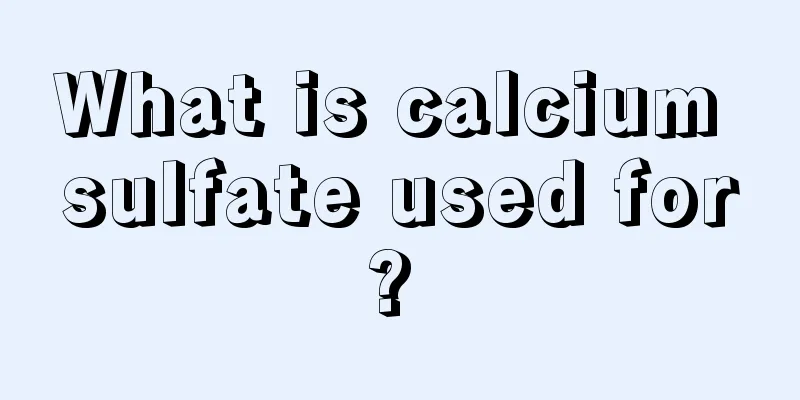What is calcium sulfate used for?

|
We all learned chemistry in school, so I believe we are not unfamiliar with calcium sulfate. However, at that time, our understanding of it was only about its appearance, which was a white crystalline powder. As you come into contact with more and more things in society, you will find that calcium sulfate is actually widely used. It can not only be used in industrial production of fertilizers, but also in food production, such as yeast and canned food. The uses of calcium sulfate are: Raw material for manufacturing cement, calcium sulfate hemihydrate and sulfuric acid. Used as filler in paint and paper industry. Used as fertilizer in agriculture, it can reduce soil alkalinity and improve soil performance. Edible grade can be used as a nutritional supplement (calcium fortification), coagulant, yeast food, dough regulator, chelating agent, and also as a tissue strengthener in canned tomatoes and potatoes, a hardener for brewing water, and a flavor enhancer for wine. In addition to being used in large quantities as a building material and cement raw material, gypsum is widely used in rubber, plastics, fertilizers, pesticides, paints, textiles, food, medicine, papermaking, daily chemicals, arts and crafts, culture and education, and other sectors. In areas lacking sulfur resources, it can be used to make sulfuric acid and ammonium sulfate. Colorless and transparent gypsum can be used as optical material. Used as filler for epoxy resin, it can be used to prepare epoxy resin adhesive with high strength, high temperature resistance and good wear resistance. It can also replace asbestos to produce asbestos-free friction materials. Calcium sulfate White monoclinic crystals or crystalline powder. Odorless. It is hygroscopic. 128℃ loses 1 molecule of crystal water. All water is lost at 163℃. It is soluble in acid, sodium thiosulfate and ammonium salt solutions, soluble in 400 parts of water, less soluble in hot water, very slowly soluble in glycerol, insoluble in ethanol and most organic solvents. Relative density: 2.32. Irritating. It usually contains 2 waters of crystallization and exists in nature in the form of gypsum ore. Properties and stability Avoid light, open flame, high temperature. It is sparingly soluble in water, but soluble in acids, ammonium salts, sodium thiosulfate and glycerol. Slightly soluble in water. Soluble in hydrochloric acid. Gypsum deposits are mainly caused by evaporation and deposition, and are the product of chemical deposition, which has certain requirements on lime specifications and quality. |
<<: The best topical medicine for killing fungi is
>>: What are the uses of magnesium oxide?
Recommend
How to treat constipation? Methods for treating constipation
Constipation is a problem that many people have n...
Knowing the early symptoms of liver cancer can help you receive timely treatment
Most liver cancer patients are already in the lat...
Myopia and presbyopia
I believe that most of us or the people we come i...
Why do I have pain in my waist and legs on the right side?
There are many reasons for body pain. Some people...
Will breast puncture biopsy cause the spread of breast cancer?
Breast biopsy does not cause breast cancer to spr...
What are the early symptoms of lung cancer? These are common symptoms of early lung cancer
In today's society, lung cancer is a very com...
How to drink grapefruit tea
Pomelo tea is a drink made from pomelo. Of course...
Compound lactic acid bacteria capsules, the first choice for patients with diarrhea
Every time the seasons change, many people will s...
What kind of clothes look better with men's leather shoes
Many male friends do not know how to dress themse...
Which is the best hospital for brain cancer
In recent years, the incidence of various types o...
Can a breast pump help boost milk production?
I believe everyone should know that breastfeeding...
What should I pay attention to when doing thread-carving rhinoplasty?
An exquisite nose can make facial features look m...
What are the early symptoms of lung cancer? Several manifestations of lung cancer that you should know
Lung cancer is a disease with a high incidence ra...
What are the postoperative complications of pituitary tumors?
Most pituitary tumors are benign tumors of the pi...
What to use for compressed facial mask to remove acne
Compressed facial masks are easy to use and conve...









